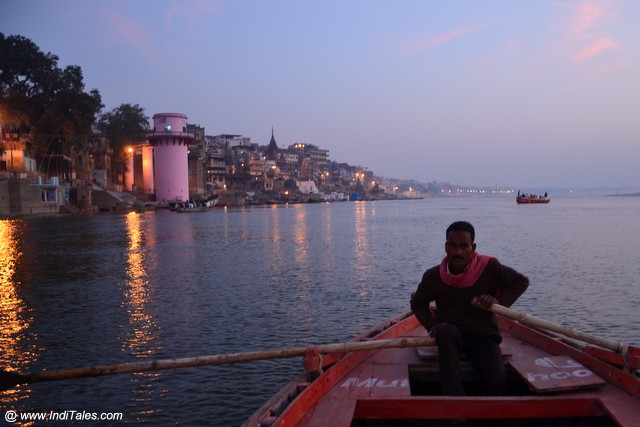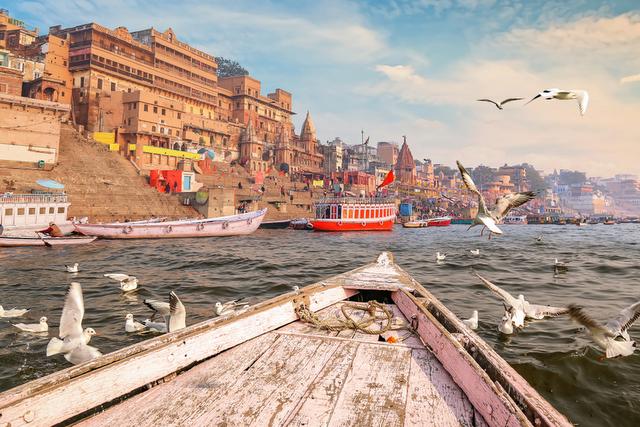Varanasi, the oldest living city in the world is synonymous with temples and ghats on the banks of the river Ganga. They extend across the length of the city between the two confluences that define the limits of the city of Varanasi. In the north, river Varuna merges with Ganga and in the south river, Assi merges with it.
Between these two holy sangams lie the ardhchandrakar or half-moon-shaped ghats leading the city and its innumerable pilgrims to the sacred Ganga. There are 84 or so ghats in all. You can walk all of them from north to south or south to north measuring 6.2 km. You may have to go up and down the steep steps that they are well known for.
Each of these ghats of Varanasi has a story to tell. Their names give away these associations mostly, but then that would just be scratching the surface. These ghats have changed hands as they went from one kingdom to another or to an ascetic or saint. Like living spaces, they have changed shapes, forms, sizes, and names.
My first memory of ghats is during my childhood when I lived in the city. We used to descend the steps, take a boat, feed the fish, and go to the other end and visit the Ramnagar Fort. Now, every time I visit Kashi, I walk on the ghats and talk to the boats and boatmen like one talks to childhood friends.
What are Ghats?
Ghats are the beautiful riverfront with steep steps joining the city and the river. The river water may go up and down with rain, and you can take as many steps as needed to touch the sacred Ganga.
Most sacred rivers have ghats on their banks to facilitate easy reach. There are beautiful ghats on Narmada by Maheshwar or Yamuna at Mathura.
What makes Ganga special at Varanasi is that it flows northwards here, while in general, it flows southwards. A popular saying goes that ‘Kashi Mein To Ganga Bhi Ulti Behati hai’ meaning in Kashi, even the Ganga flows in the reverse direction. In Sanskrit it is called Uttarvahini – the one who moves northwards, looking back at its origin before it merges with the sea.

Crescent-shaped ghats lined with temples make it look like a giant amphitheater circling the Ganga. They have water on one side, temple shikharas, palaces, and ashrams on the other, connected by steep steps.
What do to at Ghats of Varanasi?
The Ghats of Varanasi are its cultural nerve…
Click Here to Read the Full Original Article at Inditales…
